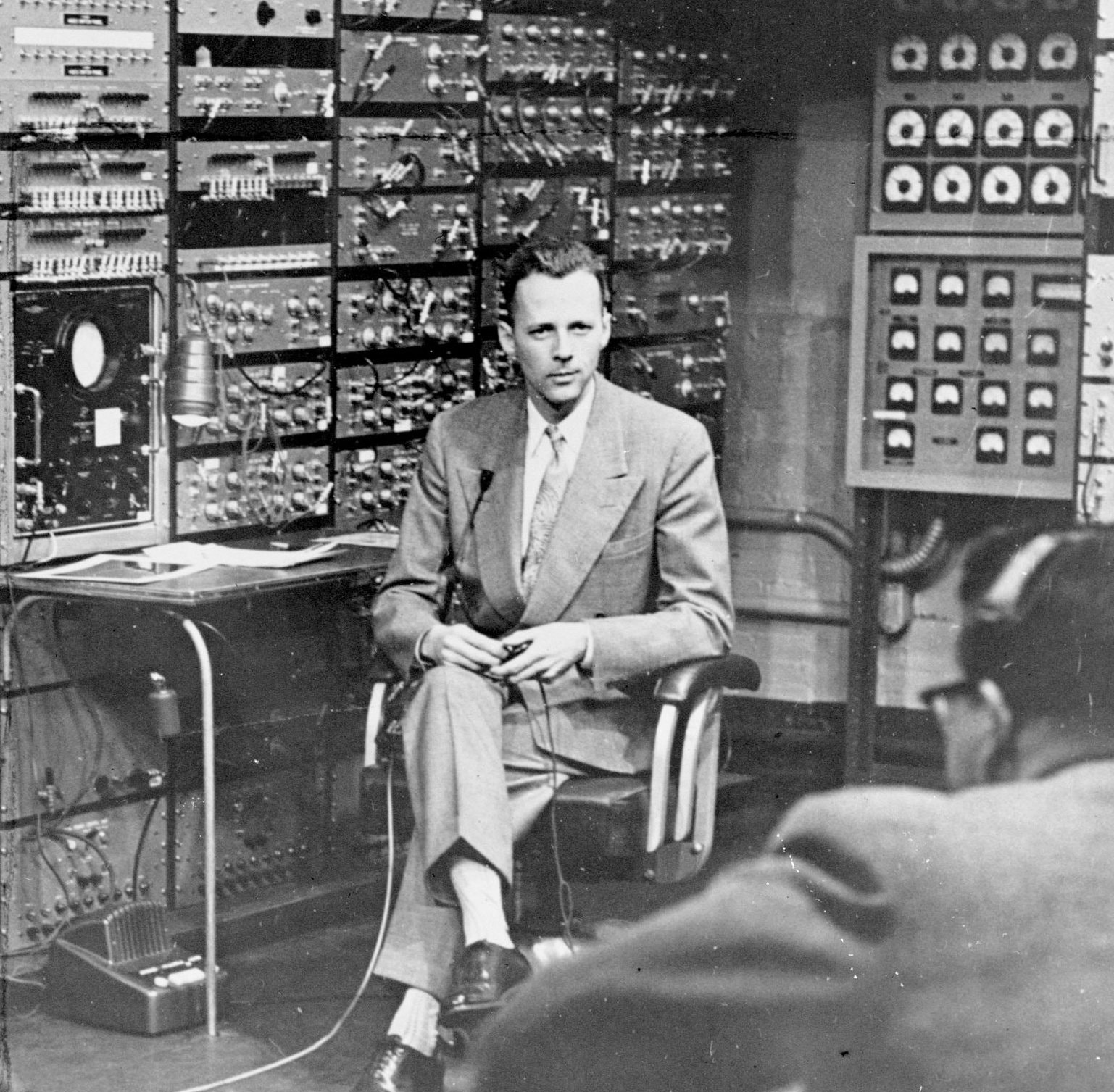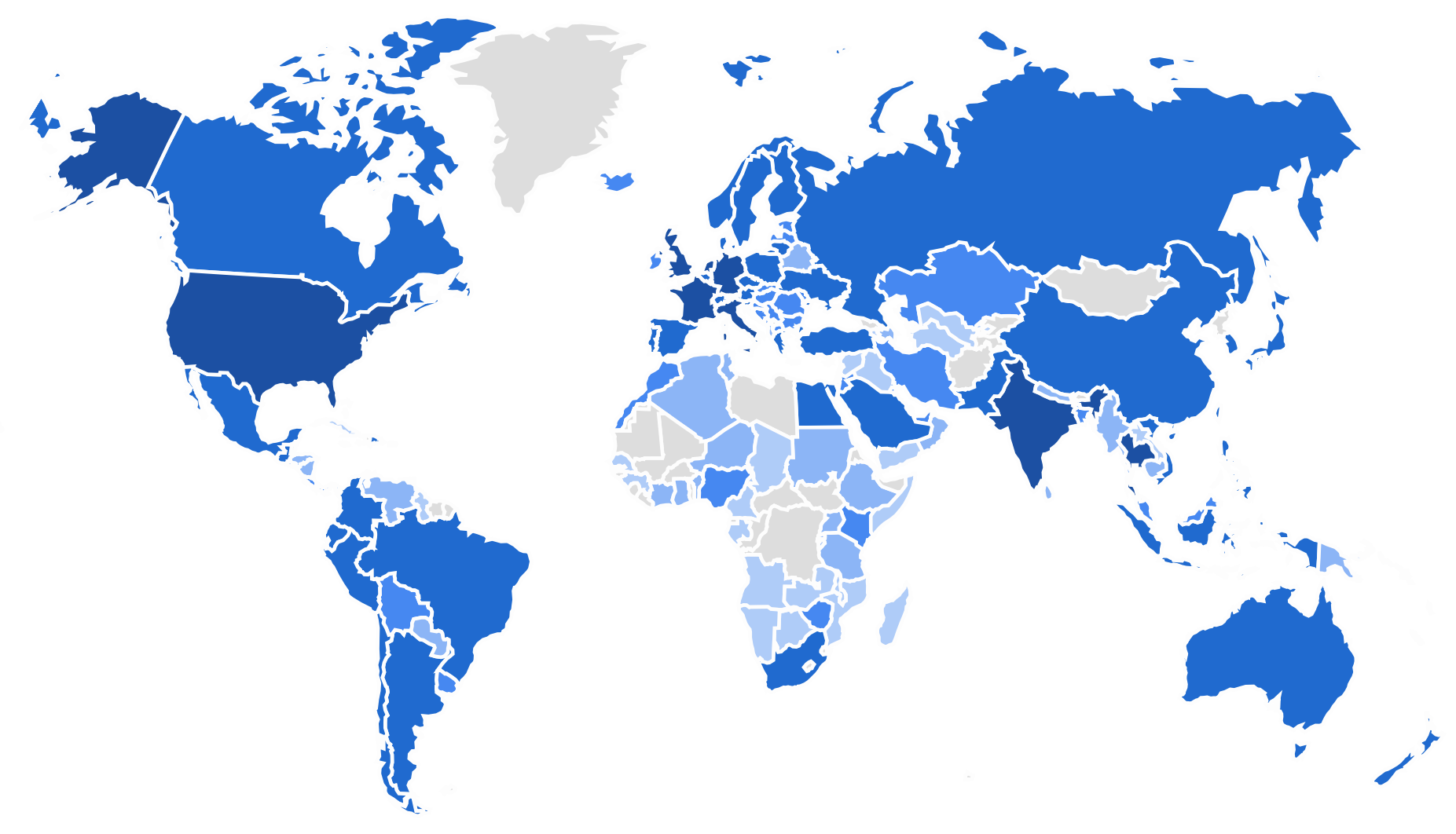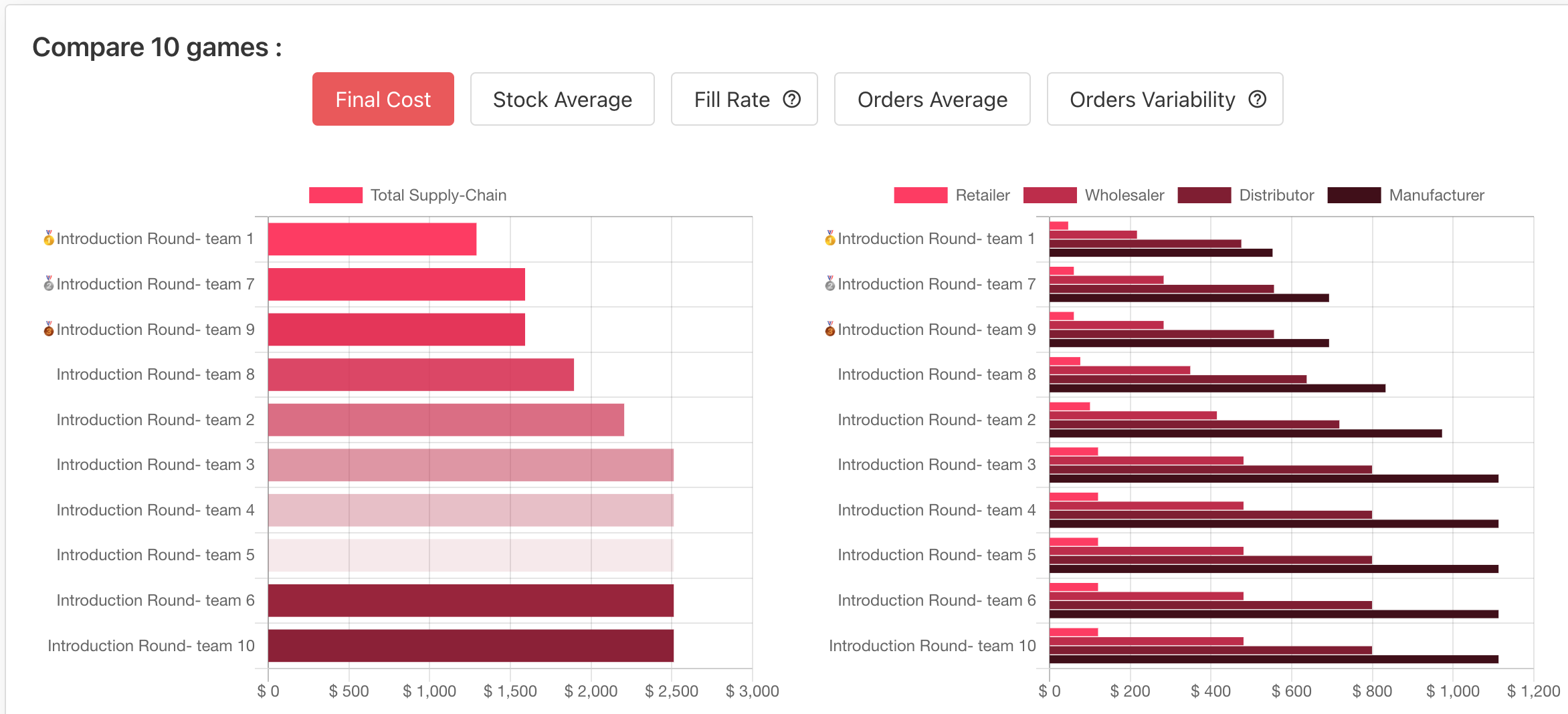Since its invention by Jay Wright Forrester at the MIT Sloan School of Management in 1960, the beer distribution game has been played by countless students in universities around the world. Professors have found it instrumental within a wide range of courses, such as supply chain management, business management, operations, industrial engineering, sales and many more. Students not only gain insight into how supply chains work (or don’t), they also learn how to better collaborate within teams in a fun and engaging game experience.
 Jay Forrester at MIT Computer Lab
Jay Forrester at MIT Computer Lab
Traditional beer games: a challenge to implement
However, though the value and virtues of the beer game are well established, it’s not exactly the easiest game to set up and run. Professors have traditionally had to explain the rules and play the game with paper slips in a highly manual fashion. Equally cumbersome is recording and retrieving results at every stage as students usually have to fill in Excel spreadsheets for the professors to be able to combine and calculate all the info into debriefing stats and graphs. Therefore, it can be a challenge to maintain students’ focus and motivation — and even more so in remote learning situations and/or with large classes led by a small team of instructors and assistants.
It’s no wonder that so many university professors have turned to Zensimu's Beer Game, a fully remote, intuitive web app developed to simulate and automate the original beer distribution game with constant feature updates. On average, three thousand students use the app every month (40,000 annually) at universities in over 100 countries!
 Map of countries using Zensimu's games
Map of countries using Zensimu's games
An extensive instructor toolset with Zensimu's Beer Game
Digitally transforming the beer game has relieved instructors of much of the tedious aspects of the game setup so that now they can quickly configure and customize all the settings according to their course objectives — whether it’s to introduce students to supply chain basics, such as stock, lead times, demand, the Bullwhip Effect, etc., or for more advanced lessons like:
Forecasting
Planning tools (MRP, DDMRP, etc.) and IT systems (ERP)
Collaboration Processes (Sales and Operations Planning)
Lean concepts applied to SC (kanban replenishment)
Supply chain network design
Intro to systems dynamics
Download the Debriefing slides to discover all the learnings brought by a Beer Game session (.pptx)
Zensimu's simulations are also highly flexible. For example, you can launch a game even if you don’t know exactly how many players will join in advance. And even if a student leaves or gets disconnected from the game, the computer will automatically step in and take over the role.
Instructors can manage all their games simultaneously through their private, modern and easy-to-use dashboard. Players can be assigned to their roles at random or via a simple Excel sheet. Set up a timer to ensure that the supply chain operates on schedule, which also adds pressure and stress to teams for a further engaging experience.
All the introductory and debriefing slides, charts, stats and graphs are automatically created — a huge time-saving boon for both instructors and players. The comparative analysis generated by the reports help select the winning team as well as spark discussion while analyzing individual behaviors throughout the game.
 Analysis compare games
Analysis compare games
The benefits of digital game-based teaching
The social and team management benefits are equally evident. By responding to sudden challenges and events in the game, such as lack of visibility up or down the chain or the instructor announcing surprising “breaking news” events, students get to know each other and must learn how to cooperate if they are going to keep things running smoothly. Meanwhile, the engaging game experience itself helps reinforce learned concepts, helping to burn these lessons into memory.
Replacing the old way of running the beer distribution game with Zensimu's version is really a no-brainer. Not only is it a fun and highly educational experience for both instructors and students, but the time saved is on its own a massive benefit.
 University Graduation
University Graduation
